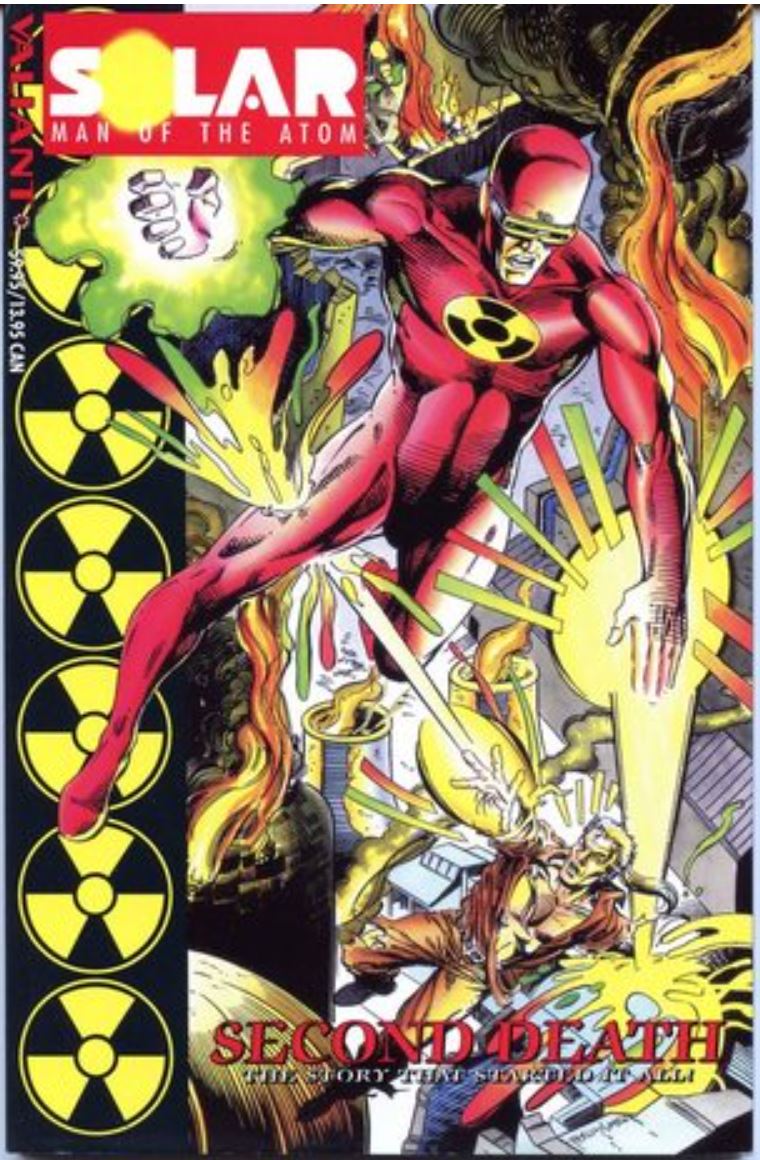
By Jim Shooter, Barry Windsor-Smith & Bob Layton with Kathryn Bolinger (Valiant)
No ISBN
The 1990s were a grim period for comics creativity. In far too many places, the industry had become market-led by speculators, with spin-offs, fad-chasing, shiny gimmicks and multiple-covers events replacing innovation and good story-telling. One notable exception was a little outfit with some big names that clearly prized the merits of well-told stories illustrated by artists immune to the latest mis-proportioned, scratchy poseur style, and one with enough business sense to play the industry at its own game…
As Editor-in-Chief, Jim Shooter had made Marvel the most profitable, high-profile comics company in America, and following his departure, he used that savvy to pick up the rights to a series of characters with Silver-Age appeal and turn them into contemporary gold.
Western Publishing had been an industry player since the earliest days, mixing major licensed brands such as Disney titles, Star Trek and Loony Tunes with in-house original stars like Turok, Son of Stone, Space Family Robinson, Magnus, Robot Fighter and – in deference to the age of the nuclear hero –Dr. Solar, Man of the Atom.
With an agreement to revive some, any or all of these four-colour veterans, Shooter and co-conspirator Bob Layton came to a bold decision and opted to incorporate all those 1960s adventures into their refits: acutely aware that older fans don’t like having their childhood favourites bastardized, and that revivals need all the support they can get. Thus the old days were canonical: they did “happen ” and would impact the new material being created for a brasher, more critical audience.
Although the company launched with a classy and classic reinterpretation of Magnus, the lynchpin title for the new universe they were building was the only broadly super-heroic character in the bunch. They had big plans for Solar, Man of the Atom who was launched with an eye to exploiting all the new printing gimmicks of the era, but was cleverly rationalised and realistically rendered. However, that’s not what this book is about.
The thrust of the regular series followed comic fan/nuclear physicist Phil Seleski – designer of the new Muskogee fusion reactor – as he dealt with its imminent activation. Inserted into the first ten issues was a brief extra chapter by Shooter, Windsor-Smith & Layton describing that self-same Seleski as he came to accept the horrific nuclear meltdown he had caused and the incredible abilities it had given him. As the world went to atomic hell, Seleski – AKA Solar – believed he had found his one chance to put things right…
That sounds pretty vague – and it should – because the compiled 10 chapters that form Alpha and Omega are a prequel, an issue #0, designed to be read only after the initial story arc had introduced readers to Seleski’s new world. That it reads so well in isolation is a testament to the talents of all those involved, and in combination with accompanying collection Solar, Man of the Atom: Second Death the saga forms a high point in 1990s comics creation. I will not be happy until this epic is generally available again – in all formats – but until that happens, I’ll take any opportunity to convince you all to seek out both these outstanding epics of science-hero-super-fiction.
You should take my word for it and start hunting now: and just by way of a friendly tip: each insert culminated with a two-page spread comprising a segment of “the world’s largest comic panel”, and the treasured slipcase edition I’m reviewing includes a poster combining those spreads into a terrifyingly detailed depiction of the end of the event…
By the way: one of those aforementioned trendy gimmicks was black-on-black printing, and the slipcase edition replicates that technique for the case cover. If you find an edition as seen in our attached cover illo, that’s the actual front of the interior book. There should also be that great big poster too. It’s still worth having without the extras, but it’s not the complete package…
Seek and enjoy, fans…
© 1994 Voyager Communications and Western Publishing Company, Inc. All rights reserved.

